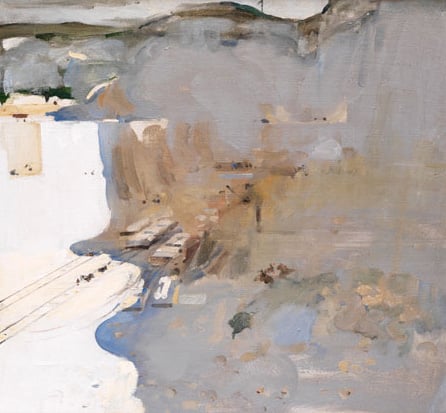The Chalk Cutting
Arthur Melville
- Art Funded
- 2013
- Dimensions
- 85 x 92 cm (unframed)
- Vendor
- Fine Art Society
Melville was born in Forfarshire (now Angus), and trained at the Royal Scottish Academy. He sold his early painting A Cabbage Garden (1877; bought for the Scottish National Gallery with Art Fund support in 2007) to an East Lothian industrialist to finance studies in Paris, where he worked between 1878 and 1880. The emphasis on tonal harmony that he discovered in avant-garde French painting had a profound influence on his own practice, and by the time he met James Guthrie, George Henry and E.A. Walton – painters who, together with Melville, would come to be known as the Glasgow Boys – his distinctive style was already established. Perhaps because of its stunning experimentalism, The Chalk Cutting (1898) was never exhibited in Melville’s lifetime. The portrayal of contemporary industry was unusual not only among the work of Glasgow Boys, but across Victorian art as a whole. To the left of the painting, the light reflecting from the chalk cliffs is rendered as a block of luminous white, while to the right Melville portrays the dust-obscured cutting in broad impressionistic strokes of grey punctuated by select details – the line of the cliffs along the top of the canvas and a group of red-headed chickens piercing the dust cloud offer bursts of colour in an otherwise muted scene.
Provenance
Artist's estate; Dowell's, Edinburgh; Lady Helen Tod; Christie's & Edmiston's; Fine Art Society; Peter Langan; Richard Shepherd; Christie's; the Fine Art Society.
